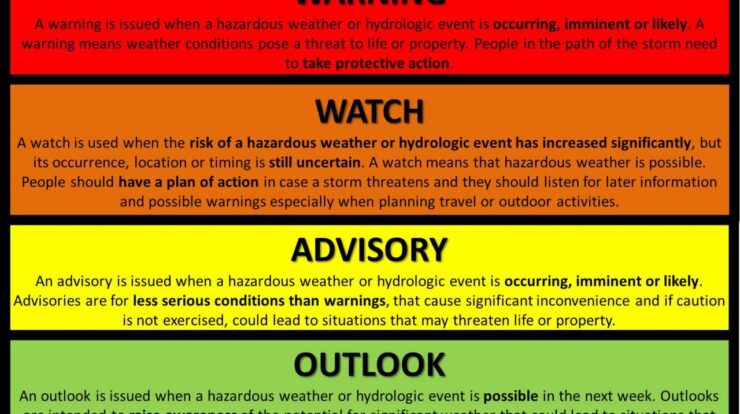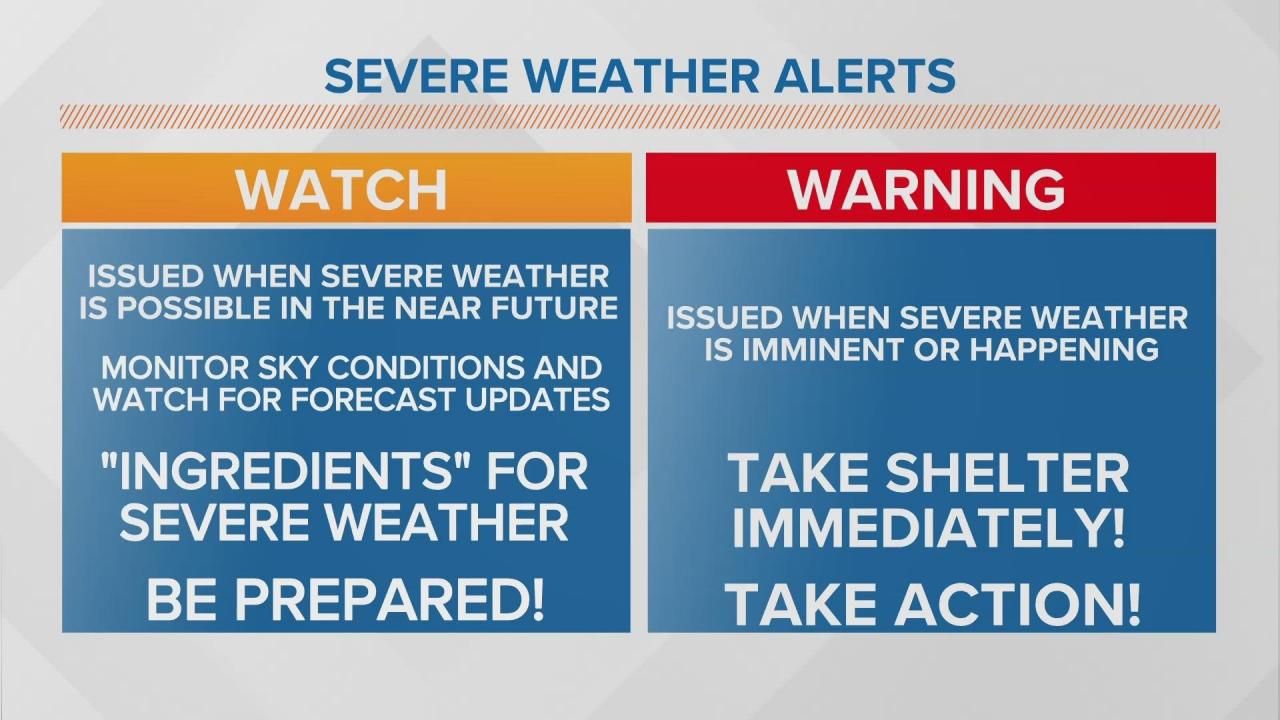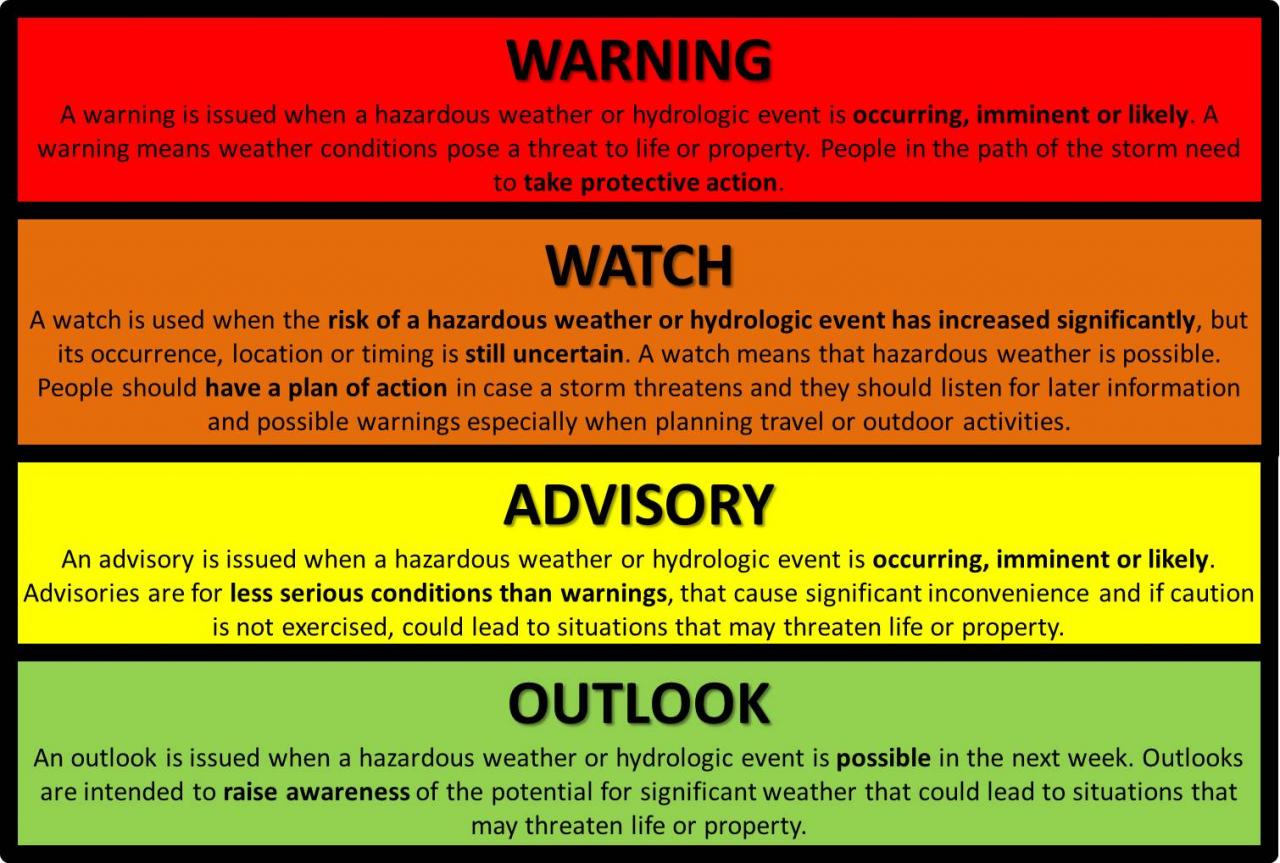
In the realm of emergency preparedness, the difference between watch and warning is crucial. Watches and warnings are two distinct types of alerts issued by authorized organizations to inform the public about potential or imminent hazards. Understanding the severity and urgency associated with each type of alert is essential for ensuring public safety and minimizing the impact of emergencies.
Watches are issued when conditions are favorable for a hazardous event to develop. They provide advance notice, allowing individuals and communities to take precautionary measures and prepare for potential impacts. Warnings, on the other hand, are issued when a hazardous event is imminent or already occurring.
If you’re looking to catch some thrilling bare-knuckle boxing action, there are several ways to watch BKFC . Whether you prefer streaming the fights online or watching them live at a local venue, there are options available to suit your needs.
And if you’re planning to watch the fights with friends, why not watch together and make it a memorable experience? Just remember, while both watches and warnings are important, a watch typically indicates a potential hazard that may develop into a more serious threat, while a warning usually means the danger is imminent and immediate action is required.
They signify a need for immediate action to protect life and property.
Definition and Overview: Difference Between Watch And Warning

Watches and warnings are two types of alerts issued by meteorological and emergency management organizations to inform the public about potential or impending hazardous weather conditions or other emergencies.
A watchindicates that conditions are favorable for the development of a hazardous weather event, while a warningindicates that the event is either imminent or already occurring.
Severity and Urgency
Watches are typically issued when there is a potential for a hazardous weather event to develop within the next 24 to 48 hours. Warnings are issued when the event is either imminent or already occurring and poses a threat to life and property.
The severity and urgency of a watch or warning is typically indicated by the color code used in the alert. Green watches indicate a low risk, yellow watches indicate a moderate risk, red watches indicate a high risk, and purple watches indicate an extreme risk.
Issuing Authorities, Difference between watch and warning
Watches and warnings are typically issued by national meteorological and emergency management organizations. In the United States, the National Weather Service (NWS) is responsible for issuing watches and warnings for hazardous weather events.
Other organizations that may issue watches and warnings include local emergency management agencies, state and regional weather services, and international meteorological organizations.
Communication and Dissemination
Watches and warnings are communicated to the public through a variety of channels, including television, radio, social media, and mobile apps. The NWS uses a variety of methods to disseminate watches and warnings, including the Emergency Alert System (EAS), the National Weather Service website, and social media.
It is important for the public to be aware of the different ways that watches and warnings are communicated and to have a plan in place for how they will receive and respond to these alerts.
Epilogue

Distinguishing between watches and warnings is critical for effective emergency response. Watches provide an opportunity for proactive preparation, while warnings demand immediate action. By understanding the severity and urgency associated with each type of alert, individuals and communities can make informed decisions and take appropriate measures to safeguard their well-being during hazardous events.
General Inquiries
What is the primary difference between a watch and a warning?
A watch indicates that conditions are favorable for a hazardous event to develop, while a warning signifies that the event is imminent or already occurring.
For basketball enthusiasts, don’t miss out on the upcoming Lakers game watch ! Gather your friends, grab some snacks and drinks, and cheer on your favorite team as they take on their rivals. Whether you’re a die-hard fan or just looking for a fun night out, watching the game together is a great way to connect and share the excitement.
Who is responsible for issuing watches and warnings?
Watches and warnings are typically issued by authorized organizations such as the National Weather Service, emergency management agencies, or local law enforcement.
How are watches and warnings communicated to the public?
Watches and warnings are communicated through various channels, including television, radio, social media, mobile apps, and emergency alert systems.




